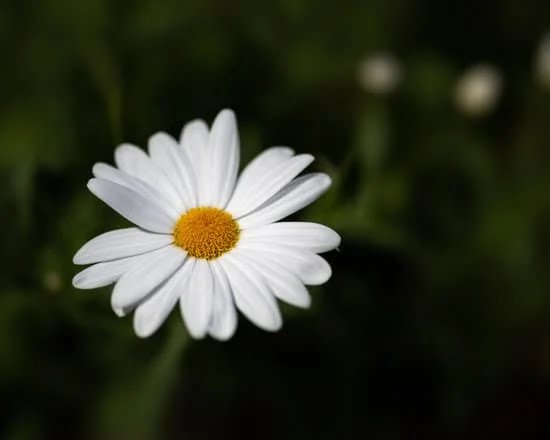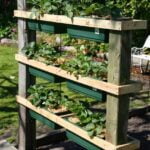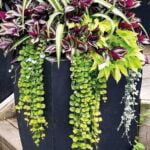Succulents landscape ideas are becoming increasingly popular as more people discover their beauty and versatility in garden design. Succulents are water-retaining plants known for their unique shapes, colors, and low-maintenance nature, making them perfect choices for creating stunning landscapes. In this article, we will explore the world of succulents and how they can be used to transform any outdoor space into a captivating oasis.
Succulents are a diverse group of plants that come in various shapes and sizes, including cacti, agave, sedum, and echeveria, among others. Their ability to thrive in arid conditions and their minimal water requirements make them ideal for landscaping projects, especially in regions with hot climates or limited rainfall. Additionally, succulents offer endless possibilities for creative design and can be incorporated into different landscape styles to add visual interest and texture.
In the following sections, we will delve into the different aspects of using succulents in landscape design. From selecting the right succulents for your specific environment to designing with these plants to create visually stunning arrangements, we will provide valuable tips and ideas for incorporating succulents into your outdoor space. Whether you’re interested in modern, rustic, or DIY projects, there’s something for everyone looking to enhance their garden with these unique and beautiful plants.
Selecting the Right Succulents for Your Landscape
When it comes to selecting the right succulents for your landscape, there are several factors to consider in order to create a beautiful and thriving garden. Here are some important considerations to keep in mind:
- Climate: One of the most crucial factors when choosing succulents for your landscape is the climate in which you live. Different succulent species thrive in different climates, so it’s important to select varieties that are well-suited for the temperature and moisture levels in your area.
- Soil Type: Succulents require well-draining soil to prevent root rot. Before planting any succulents in your landscape, make sure that the soil is sandy or gravelly and has good drainage. If your soil is not naturally well-draining, you may need to amend it with sand or perlite.
- Light Conditions: Consider the amount of sunlight that your landscape receives throughout the day. Some succulents thrive in full sun, while others prefer partial shade. Make sure to choose succulent varieties that are compatible with the light conditions in your garden.
By taking these factors into consideration, you can ensure that the succulents you choose will not only enhance the beauty of your landscape but also thrive in their new environment.
In addition, when selecting succulents for your landscape design, it’s important to think about their size and growth habits. Some succulents stay small and clump together, making them perfect for ground cover or container gardens. Others grow tall and upright, creating dramatic focal points in the garden. By strategically selecting a mix of sizes and shapes, you can create a visually dynamic landscape that showcases the diversity of succulent plants.
Ultimately, by carefully considering these factors when choosing succulents for your landscape design, you can create a stunning garden that is both visually captivating and easy to maintain. Whether you’re looking to add pops of color and texture to a modern landscape or create a rustic desert-inspired garden, there are countless possibilities when it comes to incorporating succulents into your outdoor space.
Designing With Succulents
Designing a landscape with succulents can bring a unique and eye-catching look to any outdoor space. With their variety of shapes, colors, and textures, succulents offer endless possibilities for creating stunning garden designs. Whether you’re aiming for a modern, minimalist look or a more natural, rustic feel, there are several tips to keep in mind when designing with succulents.
Consider the Climate and Sun Exposure
Before diving into your succulent landscape design, it’s important to consider the climate and sun exposure of your outdoor space. Different succulent varieties have varying requirements when it comes to sunlight and temperature. Some prefer full sun, while others thrive in partial shade. By taking these factors into account, you can ensure that your succulent garden will flourish in its environment.
Utilize Different Sizes and Shapes
One of the most appealing aspects of designing with succulents is the wide range of sizes and shapes available. To create visual interest in your landscape, consider incorporating an assortment of succulents with varying heights, textures, and forms. Taller succulents like agave or yucca can add vertical elements to your design, while low-growing varieties such as sedum or echeveria can be used to fill in gaps and create ground cover.
Experiment With Color Combinations
Succulents are known for their striking colors, ranging from vibrant greens to deep purples and even shades of pink and orange. When designing your landscape with succulents, don’t be afraid to experiment with different color combinations to create bold and visually appealing arrangements. Pairing contrasting hues like blue-green agave with red-tipped aeoniums can add drama to your garden, while combining pastel-toned echeverias with dark-leaved haworthias can lend a softer, more romantic feel.
By keeping these tips in mind as you design your landscape with succulents, you can create a visually stunning outdoor space that is sure to impress. Whether you’re aiming for a sleek modern look or a more traditional feel, the versatility of succulents makes them an excellent choice for any style of garden design. The keyword “succulent landscape ideas” is essential when planning out how these plants will fit into the overall feel of your outdoor space.
Incorporating Succulents Into Different Landscape Styles
When it comes to incorporating succulents into different landscape styles, the possibilities are endless. Whether you prefer a modern or rustic look, succulents can add a unique and striking touch to any landscape design. With their diverse colors, shapes, and sizes, succulents offer plenty of versatility in terms of design.
For a modern landscape style, consider using large agave plants as focal points in your design. These bold and architectural succulents provide a sleek and contemporary feel to the landscape. Pair them with smooth river rocks or concrete planters for a minimalist and sophisticated look.
On the other hand, if you’re aiming for a rustic landscape style, opt for hardy and low-maintenance succulents such as sedums or hens-and-chicks. These resilient plants blend well with natural elements like weathered wood, gravel pathways, and stone features commonly found in rustic landscapes.
When combining succulents with modern or rustic landscape styles, it’s crucial to pay attention to the overall composition and balance of the design. Utilize a variety of textures, heights, and colors to create visual interest and harmony within the space.
| Modern Landscape Style | Rustic Landscape Style |
|---|---|
| Large agave plants as focal points | Hardy succulents like sedums or hens-and-chicks |
| Sleek and contemporary feel | Natural elements like weathered wood and stone features |
| Pair with smooth river rocks or concrete planters | Blend well with gravel pathways |
Succulent Arrangements and Pairings
Succulent gardens are a popular choice for landscape design due to their low maintenance and striking appearance. When creating succulent arrangements and pairings, it’s essential to consider the colors, shapes, and sizes of the plants to create eye-catching compositions. Here are some tips for creating stunning succulent landscapes:
1. Consider the Succulent Variety: Select a variety of succulents with different shapes, textures, and colors to add visual interest to your landscape design. Incorporate rosette-shaped succulents like Echeveria or Aeonium with spiky varieties such as Agave or Yucca for a dynamic arrangement.
2. Play with Height and Proportion: Create visual balance by mixing tall, upright succulents with low-growing or trailing varieties. This not only adds depth and dimension to your landscape but also creates a more visually appealing composition.
3. Pairing Succulents with Complementary Plants: Integrate succulents with other drought-tolerant plants like ornamental grasses or Mediterranean herbs to create beautiful and sustainable garden designs.
4. Container Arrangements: Utilize containers such as terracotta pots, vintage crates, or driftwood planters to showcase your succulent compositions. Group together different succulent varieties in a single container for a cohesive yet captivating display.
Remember that succulents make an excellent addition to any landscape design due to their versatility and resilience. By following these tips for creating eye-catching compositions, you can achieve a stunning succulent landscape that will be the envy of all who see it. Whether you’re designing a modern garden or rustic retreat, incorporating succulents into your landscape will surely elevate its overall appeal.
Maintaining Succulent Landscapes
Choosing the Right Soil and Drainage
When it comes to maintaining a beautiful succulent landscape, the right soil and drainage are crucial. Succulents thrive in well-draining soil, so be sure to choose a mix specifically designed for cacti and succulents. This will help prevent root rot, a common issue with these plants. Additionally, consider adding perlite or coarse sand to improve drainage in your soil.
Watering Techniques
One of the essential care tips for succulent landscapes is proper watering techniques. Overwatering is one of the leading causes of succulent death, so it’s important to water them sparingly. A good rule of thumb is to allow the soil to dry out completely between waterings. During the growing season, water deeply but infrequently, allowing the water to reach the roots.
Protection From Extreme Temperatures
Succulents are known for their ability to withstand challenging conditions, but they still need protection from extreme temperatures. In very hot climates, provide some shade during the hottest part of the day. On the other hand, in cooler regions, it’s important to protect them from frost during winter months. Consider using frost cloth or bringing potted succulents indoors during cold spells.
By following these essential care and maintenance tips for your succulent landscape, you can ensure that your plants remain healthy and vibrant year-round. Remember that proper care is key to enjoying a stunning succulent garden for years to come.
DIY Succulent Landscape Projects
Adding a personal touch to your garden with succulents can be a fun and creative project. Succulent landscape ideas can range from simple DIY planters to intricate garden art installations, allowing you to express your unique style and taste. Whether you have limited space or a sprawling yard, there are plenty of ways to incorporate succulents into your landscape that will make it stand out.
One popular DIY project is creating a vertical succulent garden. This is an excellent option for those with limited space, as it allows you to maximize vertical surfaces such as walls, fences, or even trellises. By using a variety of succulent species with different shapes, colors, and textures, you can create a stunning living tapestry that adds visual interest to any outdoor area.
Another creative way to personalize your garden with succulents is by making your own hypertufa planters. Hypertufa is a lightweight cement-based mixture that can be molded into various shapes and sizes. By crafting your own custom containers, you have the freedom to design unique arrangements that perfectly complement your landscape design. Additionally, these planters are durable and provide excellent drainage for succulents – essential for their health and longevity.
| Succulent Garden Project | Description |
|---|---|
| Vertical Succulent Garden | A space-saving idea that utilizes walls or fences for planting various types of succulents in an artistic manner. |
| Hypertufa Planters | Crafting lightweight cement-based containers suitable for planting succulents while adding a personalized touch through customized designs. |
Inspiring Succulent Landscape Design Ideas
In conclusion, succulents are versatile and low-maintenance plants that can add beauty and interest to any landscape. Whether you have a modern, rustic, or traditional garden style, there are plenty of ways to incorporate these unique plants into your outdoor space. From selecting the right succulents for your climate to creating eye-catching arrangements and pairings, there are endless possibilities for using succulents in your landscape design.
For those looking for inspiration, real-life examples and photos of succulent landscapes can provide countless ideas for incorporating these plants into your own garden. Whether it’s a stunning succulent-filled rock garden or a minimalist modern planter display, seeing how others have used succulents in their landscapes can spark creativity and offer valuable insights into what works best in different settings.
So whether you’re a seasoned gardener or just starting out, don’t be afraid to experiment with succulents in your landscape. With the right selection, design, and maintenance, you can create a stunning outdoor space that showcases the unique beauty of these drought-tolerant plants. From DIY projects to professional designs, let your imagination run wild with succulent landscape ideas and create a one-of-a-kind garden that reflects your personal style and love for nature.
Frequently Asked Questions
How Do You Landscape Succulents?
Landscaping succulents involves choosing the right varieties that are suitable for your climate, ensuring proper drainage in the soil, and arranging the plants in a visually appealing way. Succulents come in various shapes, sizes, and colors which can be used to create interesting patterns and textures in your landscape.
How Do You Arrange Succulents in the Ground?
When arranging succulents in the ground, it’s important to consider their individual sunlight and water requirements. Grouping together those with similar needs will help them thrive. You can also play with different heights and colors to create an attractive arrangement. And don’t forget to leave enough space between plants to allow for growth.
How Do I Make My Succulent Garden Beautiful?
To make your succulent garden beautiful, consider adding decorative rocks or pebbles as a mulch and using containers of varying heights and materials to create visual interest. Incorporating other decorative elements like driftwood or statuary can also enhance the overall look of your garden. Regular maintenance such as removing dead leaves or flowers will help keep it looking its best.

Welcome to my gardening blog! I am passionate about plants and enjoy sharing my knowledge and experiences with others. In this blog, I will write about everything related to gardening, from tips on how to get started to updates on my own garden projects.





